Rebecca Gilpin is a London born artist currently working in central London. She specializes in abstract painting on a large scale, taking inspiration from different periods between ancient art and popular culture – cave etchings to record covers. She graduated with a first in Fine Art from the University of Oxford Brookes in 2018, followed by an MA in 2019.
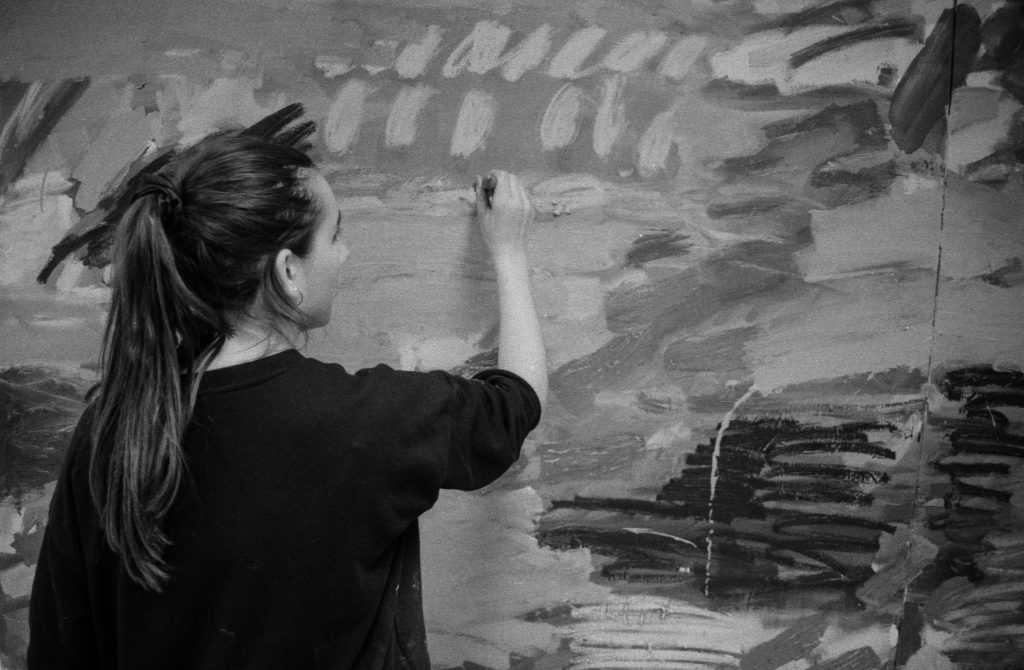
Tell us a little bit about yourself. Where are you from originally and when did art first enter your life?
I’m from London but I have Italian heritage which I feel closely connected to. Art has always been a part of my life; I went to India as a child and saw a man staining a piece of cloth with two colours of Indian ink, and the way the colours bled into each other did something to me. Ten years down the line, I started trying to achieve that same feeling and working in a similar way but with paint. I used to draw a lot as a child but moved towards larger scale paintings towards the end of my teens; a couple of years later I did my first properly large-scale oil painting and have continued to do so ever since.
Has your work always taken on the style it currently embodies?
Not at all. I worked with collage before I was a painter, and then moved onto soak staining which is worlds apart from the multilayered oil paintings I do currently. I remember making some political collages when Nick Clegg and David Cameron were in power, sort of in the style of Hannah Hoch – very different from what I make now. I tend to stay clear of politics when I can; to me, being a female artist is political enough. I am constantly reading about spirituality and the afterlife so the work has become very fluid and textured. I want the paintings to be like church murals – but for my own religion – using colour combinations from the record covers that have inspired me throughout my life.
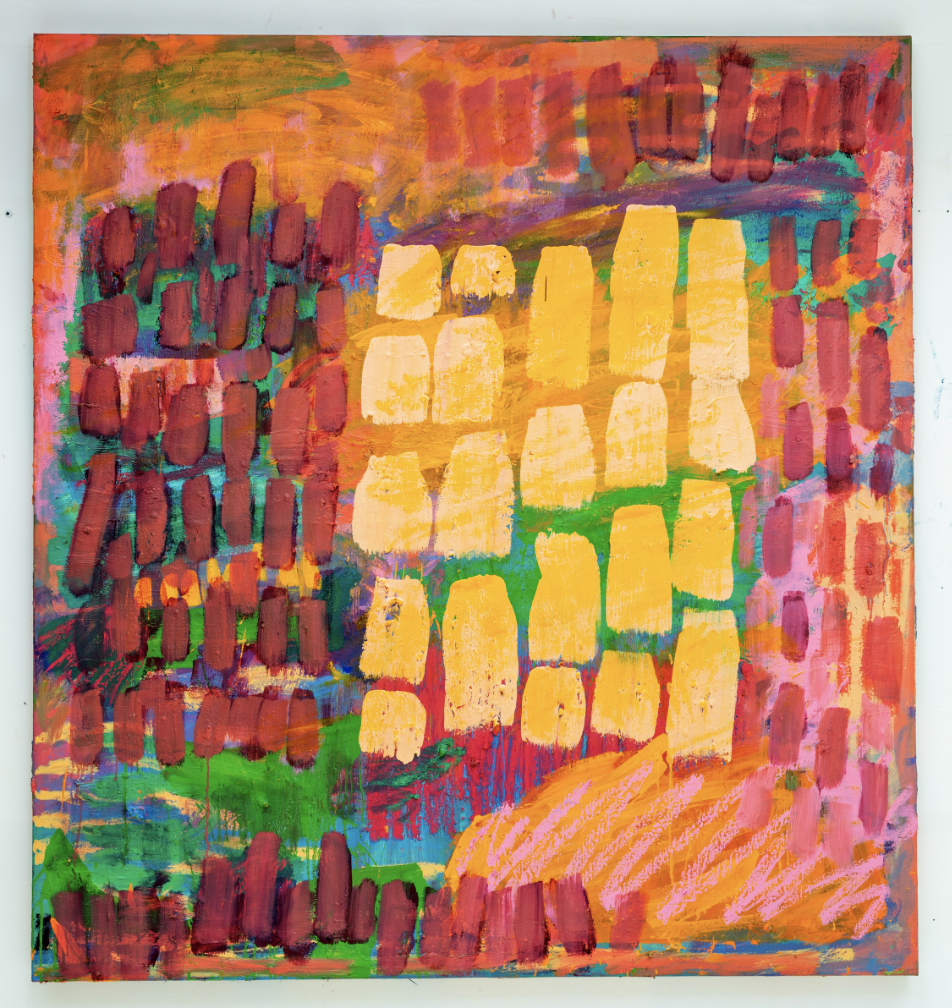
What’s a day in the studio like for you?
I often start the day by building new canvases for future paintings, and reading – usually at the same time! I’ve got an app on my phone where you can scan whole books and it reads it aloud to you which is great for multitasking.
I like to work on three or four different paintings at the same time, sometimes more, and sometimes just one – but always listening to music. I am constantly writing about my work throughout the day too, trying to make sense of what I am trying to achieve and what drives me to do it – lots of heavy self reflection after a long day of painting, looking back at what I’ve made. It’s almost like art therapy for me.
I listen to everything when I work but specifically 70’s and 80’s music for this current series. I tend to listen to specific periods of music for each series of work, not always on purpose but one piece of music leads to another and then to a playlist. I’ve been really drawn to 80’s harmonies from choral music and bands such as Crosby Stills and Nash recently, titling one of my latest paintings ‘Rejoice Rejoice, we have no choice’ after one of their lyrics.
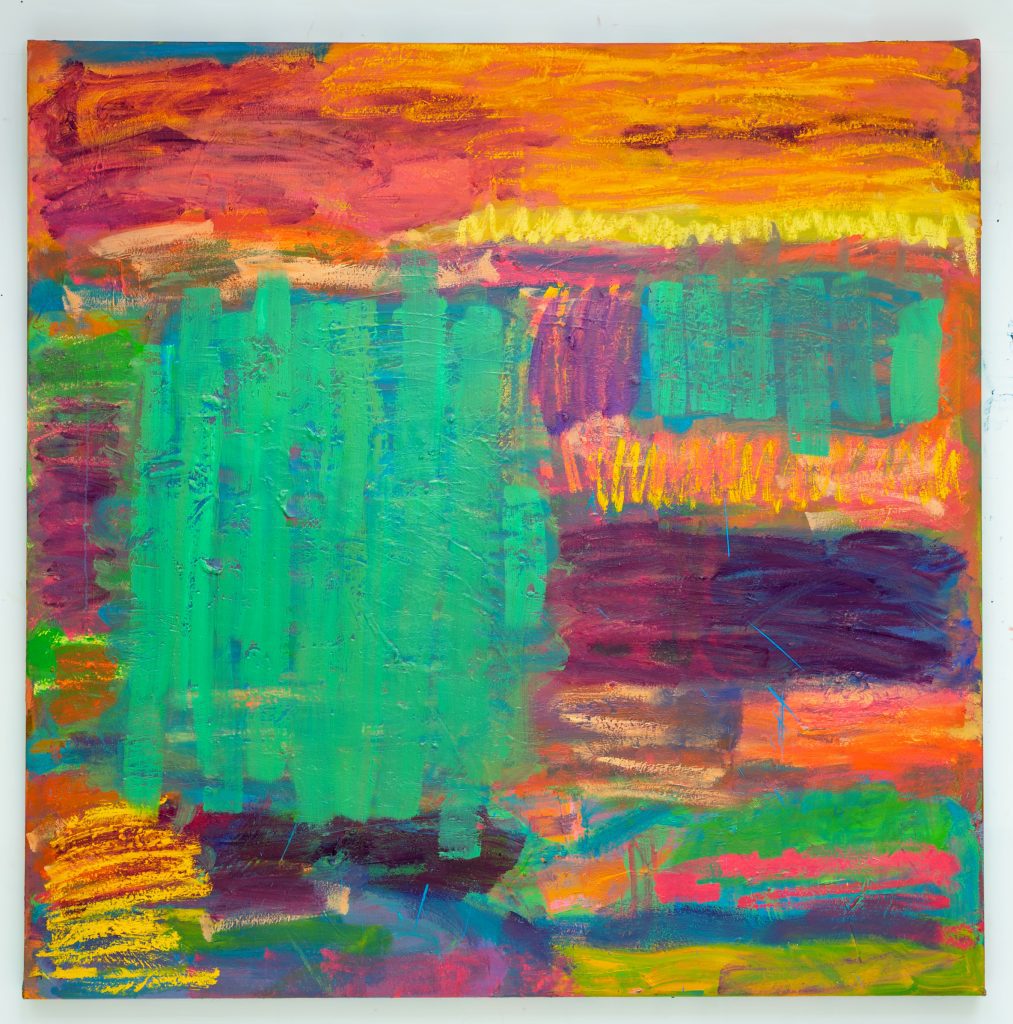
What’s next for you?
I am preparing for a solo show with a London gallery – very exciting times ahead!
What are you working on now?
I’ve been working on a large scale series including three huge diptychs. They’re all very much process paintings, but I’ve been playing around more with the threshold between abstraction and representation. I have started drawing shapes on my canvases and working back into them – sometimes to the point of erasure – which is a new element of my practice. The music I am listening to at the moment is also seeping into the work and the books I’m reading too – the varying beliefs that surround the afterlife are being mirrored in the work. The paintings are generally titled after song lyrics or refer to certain thoughts I am having now, often informed by my daily journaling.
Have you always painted in the style your work currently inhabits?
No, I made soak stain paintings for a long time but for now I think I’m fully dedicated to oil painting for the foreseeable future. There’s so many techniques and mediums to try that totally change the physicalities of the paint – the possibilities seem almost endless. It’s hard not to find that extremely exciting as a painter; I think it’s what keeps me so driven. I can’t wait to see the results – you know?
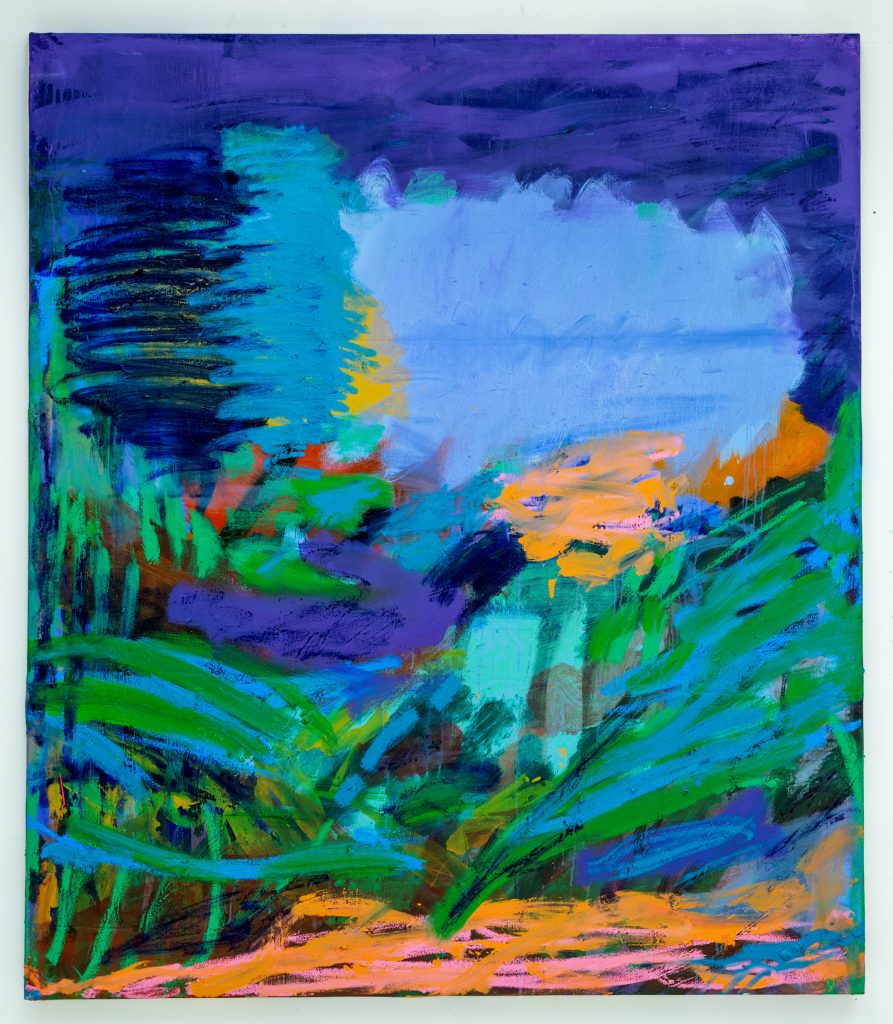
Does your work reference any Art Historical movements?
I am particularly drawn to the work of the Abstract Expressionists 1940-50 including Philip Guston, Joan Mitchell and De Kooning of course. I’m going through a big Cy Twombley phase at the minute.
What is your process like? How do you begin a work?
I usually start with one block colour after priming my canvas – then the underpainting begins. I like to build up layers, thinning down and thickening up as I go until the painting begins to take form. I sometimes plan out a simple composition but usually don’t stick with it and let the painting tell me what it wants – like a sort of dialogue between us. It’s process painting really, so I never know how the painting will look before I make it. I always paint to music; that’s what gets me motivated to be as expressive as possible, like action painting. Most Mondays (when it’s quieter in town), I go and see a few exhibitions to get inspiration and can also be found at any number of private views in the evenings throughout the week to see what other painters are doing. There’s a great scene full of lovely people happening in London right now, so it’s a very social thing too.
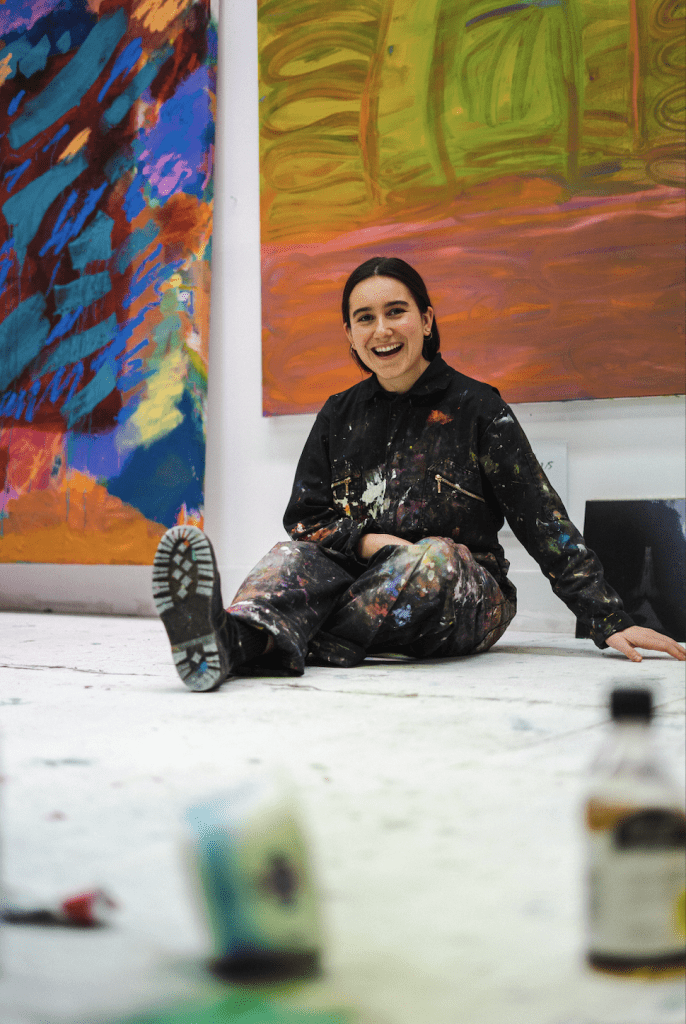
At the end of every interview, we like to ask the artist to recommend a friend whose work you love for us to interview next. Who would you suggest?
Fiona Roberts and Charlie Boothright – both incredible female painters that work in my building who I am really inspired by and lucky to know.